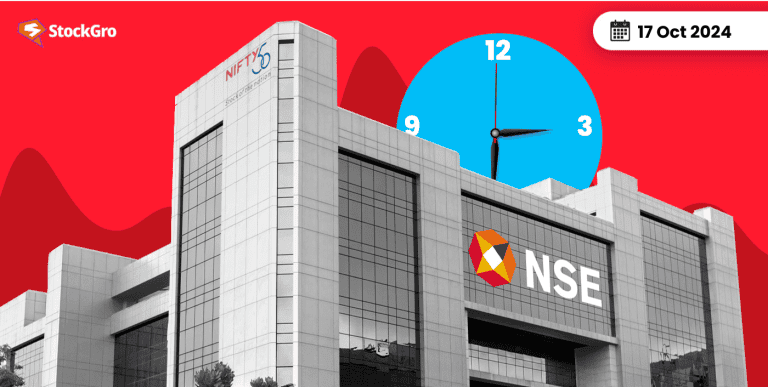
Imagine Raj, a diligent investor, constantly struggling to meet his financial goals. Despite diligently saving and investing, his stock portfolio strategy is never quite executed as expected leading to poor performance. The culprit? A poor understanding of his own behaviour and the dynamics of the market. Raj’s story isn’t unique; many investors face similar challenges due to psychological biases, emotional decision-making, and a lack of strategic planning.
This article aims to provide a practical framework for understanding investor behaviour and building personalized portfolio.
Understanding investor behavior
In the wider setting of financial markets, investor behavior is the choices and conduct of people or institutions. It covers a broad spectrum of elements, including how investors see risk, respond to changes in the market, and choose their asset allocation.
Since it directly affects market dynamics and asset values, knowledge of investor behaviour is absolutely vital during the investment process.
Positive investor mood, for instance, can drive inflated asset prices in a bull market; negative sentiment in a bear market can generate panic selling and market collapses.
Must read: Behavioural finance: Understanding the psychology behind investment decisions
Investor behaviour is much shaped by psychological aspects. Often driven by emotions like greed and fear, investing decisions result in illogical actions that could compromise financial results.
Think of the financial crisis of 2008, when market panic seized. Many investors panicked when asset values fell and sold off their holdings at large losses, frequently at the worst possible moment.
On the other hand, in bull markets, avarice can lead to too high risks taken by investors in search of immediate profits, therefore neglecting wise investing guidelines. One typical example is the dot-com bubble of the late 1990s, in which investor excitement drove inflated tech stock prices that caused significant losses when the bubble collapsed.
Cognitive biases that could cause bad decision-making affect investors a lot. Developing a more disciplined investment plan depends on an awareness of these biases. Common prejudices include the following:
- Overconfidence: Many investors feel they can routinely outperform the market or forecast changes in the market. This overconfidence could cause too dangerous investments and too much trading.
An investor might, for example, heavily invest in a stock just because they have had several good transactions, thus ignoring appropriate study and analysis.
- Loss aversion: Usually, investors suffer more from losses than from the joy of corresponding increases. This bias can cause one to hang onto failing investments for far too long in search of a rebound instead of reducing losses.
An investor might, for instance, keep a decreasing stock in their personalized portfolio while losing chances to buy in more attractive assets in case of a loss realisation.
- Herd behaviour: Investors who follow the herd and base their decisions on what others are doing instead of their own analysis develop this inclination.
A real-world illustration of this is evident in market bubbles when investors swarm popular stocks, raising prices and subsequently, causing losses as the buzz dies.
Developing a sensible investing strategy depends on an awareness of these psychological elements and biases. Investors might try to minimise the impact of emotions and cognitive biases by realising how they affect decisions, thus producing more educated and profitable investing plans.
Also read: Stock Market Psychology: Trading Tips, Fear, Greed & More
Key factors influencing investor behaviour
- Risk tolerance: Risk tolerance is the capacity to manage possible losses in the search for returns. While cautious investors may want bonds, high-risk tolerance results in equity investment. Building a balanced personalized portfolio that matches your comfort level depends on knowing your risk tolerance.
- Investment goals: Well-defined investment objectives direct your approach. Among the examples are house purchases, retirement funds, and financing of schooling. Establishing SMART goals—specific, quantifiable, attainable, relevant, and time-bound— guarantees well-defined, practical goals.
- Time horizon: Your planned investment time influences asset decisions and risk. Short-term goals need safer assets like bonds, while long-term goals can take on bigger risks like equities.
- Behavioural economics: Decisions are affected by psychological elements like cognitive prejudices. For market booms, for instance, following the crowd might cause prices to rise; panic selling during downturns locks in losses.
- Past experiences: Previous investment results influence behaviour. While earnings could inspire risk-taking, losses can cause more risk-averse choices. Examining prior decisions helps one make better decisions going forward.
- Market conditions: While bear markets inspire prudence, bull markets could make investors more hopeful. Maintaining current knowledge of industry trends facilitates the making of reasonable selections.
- Education and knowledge: Your decisions improve with increasing knowledge of financial markets. While less educated investors might act on intuition or outside guidance, educated investors depend on facts.
- Lifestyle and personal circumstances: Events in life like marriage or retirement affect choices about investments. For example, while retirees concentrate on money preservation, new parents could give education savings top priority.
Must read: Risk tolerance: Defining your personal investment strategy and portfolio
Building a personalised portfolio
Assessing investor profiles
Usually defined by their risk tolerance and aims, investors fall into three basic profiles: cautious, balanced, and aggressive.
- Conservative investors: Capital preservation is first for these investors, not expansion. To guarantee consistent but modest returns, a retiree might, for instance, select low-risk choices such as government bonds or fixed deposits.
- Balanced investors: These buyers want stability mixed with progress. To balance risk and return, a mid-career professional might invest in bonds as well as stocks.
- Aggressive investors: Usually younger, long-term horizon investors with aggressive profiles seek high profits and are ready to accept large risks, thus substantially investing in stocks or even cryptocurrency.
Example – Believing more long-term growth, a thirty-year-old aggressive investor allocates 80% to equities and 20% to bonds. Valuing stability over possible big returns, a prudent retiree allocates 80% to bonds and only 20% to shares.
Also Read : The psychology of money: What you need to know
Asset allocation strategies
Distributing investments among several asset classes—stocks, bonds, cash, etc. to balance risk and return is known as asset allocation. These are some important tactics:
- Strategic asset allocation: This long-term strategy sets a fixed target allocation depending on your investing objectives and risk tolerance. An aggressive investor would, for instance, allocate 80% to stocks and 20% to bonds, rebalancing the personalized portfolio often to preserve this composition.
- Tactical asset allocation: This short-term approach changes the personalized portfolio to seize market possibilities. Should equities show promise, an investor can momentarily raise their equity exposure searching for more gains.
- Constant-weight asset allocation: This approach keeps the original asset composition of the personalized portfolio by employing consistent rebalancing. Should equities beat and surpass the established aim, the investor sells some to bring harmony.
- Dynamic asset allocation: Here the personalized portfolio is constantly changed depending on the state of the markets. In a recession, for example, an investor might cut equities and boost safer assets like bonds.
- Insured asset allocation: This approach shields a minimal personalized portfolio value—the “floor”—by moving to safer assets should the value drop and permits expansion when investments perform as expected.
Each of these approaches to how to build a stock portfolio aims to manage risk and maximise rewards, tailored to market trends and the individual investor’s profile.
Selecting investment products
Your investing goals and risk tolerance will determine the appropriate investment products. Here are illustrations for every kind of investor:
- Conservative: Low-risk and consistent returns abound from products including fixed deposits, government bonds, or debt mutual funds. To guarantee a stable yet consistent income, a conservative investor can, for example, buy Treasury bonds or PPF (Public Provident Fund).
- Balanced: Bonds and equity mutual funds can be combined by balanced investors. To balance risk, a balanced investor in India would make investments in a mix of safer bond funds and blue-chip companies such as Reliance Industries.
- Aggressive: Aggressive investors find stocks, equities, mutual funds, and even alternative assets like real estate or cryptocurrencies fit. Seeking notable financial appreciation, they could invest in sector-specific funds like technology or healthcare or in high-growth firms.
Implementing the investment plan
Creating a financial plan
A thorough financial plan lets your investments match your time horizon, risk tolerance, and goals. This is a detailed walk-through instruction for building one:
Step 1: Define your financial goals
- List and rank your financial goals (retirement, house purchase, education savings).
- Indicate the target date and the required amount for every goal.
Step 2: Assess your current financial situation
- Review your income, debt, assets, and expenses.
- Figure your net worth and cash flow.
Step 3: Determine your risk tolerance
- To find your degree of comfort with financial risks, complete a risk tolerance questionnaire.
Step 4: Develop an investment strategy
- Match your risk tolerance and objectives with an asset allocation.
- Choose financial instruments (stocks, bonds, mutual funds) consistent with your approach.
Step 5: Create a budget and savings plan
- Create a budget including consistent funding for your investing accounts.
- Set automated savings to guarantee consistency.
Step 6: Implement the plan
- Open the necessary investment accounts (e.g., brokerage, and retirement accounts).
- Choose the investment products based on your asset distribution.
Step 7: Review and adjust
- Review your plan often and make any changes to keep on track towards your objectives.
Monitoring your portfolio
Maintaining full control of your personalized portfolio is essential to making sure it keeps meeting your needs once your investing strategy is in place. Markets are dynamic and personal situations fluctuate; so, regular modifications are required.
Track performance and make quick decisions by monitoring your investments. It is about making sure your portfolio fits your changing financial objectives and that your investments are moving as expected. Here’s how you might tackle it.
Create a schedule to review your personalized portfolio—ideally every quarter or semi-annually. This will enable you to spot any appreciable changes in your investments or the market. For instance, the risk profile of the portfolio may have changed more aggressively if your bond assets are behind while your equity holdings provide outstanding returns.
See whether your financial benchmarks line up. For instance, if your target was ₹2,00,000 by this year and you are only at ₹1,50,000, you might have to review your asset portfolio or boost donations.
Bottomline
Developing a good investing plan calls for knowing your personal behaviour, determining your financial objectives, and carefully choosing and managing your portfolio—not only for selecting stocks or bonds.
Whether your investing style is conservative, balanced, or aggressive, customising your personalized portfolio with careful asset allocation and product choice guarantees that your investments fit your objectives and risk tolerance.
Investing is about making strategic decisions fit for your particular situation, not only about chasing profits.
FAQs
What is an investing framework?
An investing framework is a methodical way of deciding what to invest in. It covers developing financial goals, evaluating risk tolerance, deciding on asset distribution, and choosing particular investments. This structure guides investors in methodically assessing prospects, controlling risk, and matching their portfolios to their financial goals. Following a consistent approach helps investors make wise selections and properly adjust to changing market conditions.
What is the investment behaviour of investors?
Investment behaviour is the way one decides about their portfolios. It covers elements such as risk tolerance, financial goals, market movements, and psychological variables including fear and greed. Behavioural finance research reveals that cognitive biases and emotions sometimes result in illogical choices, such as panic selling in market downturns or clinging to lost stocks for too long. Knowing these patterns helps one choose investments more wisely.
What are the 5-factor investing models?
The five-factor investing model includes:
- Size: Smaller companies tend to outperform larger ones.
- Value: Stocks with lower price-to-book ratios outperform those with higher ratios.
- Quality: Companies with strong profitability and low debt perform better.
- Momentum: Stocks with strong past performance continue to perform well.
- Low volatility: Stocks with lower volatility provide better risk-adjusted returns.
These factors help explain differences in portfolio returns.
What is a total portfolio approach?
A complete investment plan, the total portfolio approach (TPA) combines all assets and liabilities under one, coherent framework. TPA takes the whole risk and return profile of the portfolio, unlike conventional techniques that emphasise specific asset classes. Considering the larger economic environment and matching investments with long-term goals, this strategy seeks to maximise general performance, improve diversification, and better control risks.
What is a Smart Beta portfolio?
Combining passive and active investment techniques, a Smart Beta portfolio seeks to improve returns by capturing market inefficiencies. It substitutes various index-building guidelines—value, size, momentum, and volatility—rather than conventional market capitalisation. By concentrating on particular investment elements, this strategy seeks to produce greater risk-adjusted returns while preserving a transparent, rules-based system.

